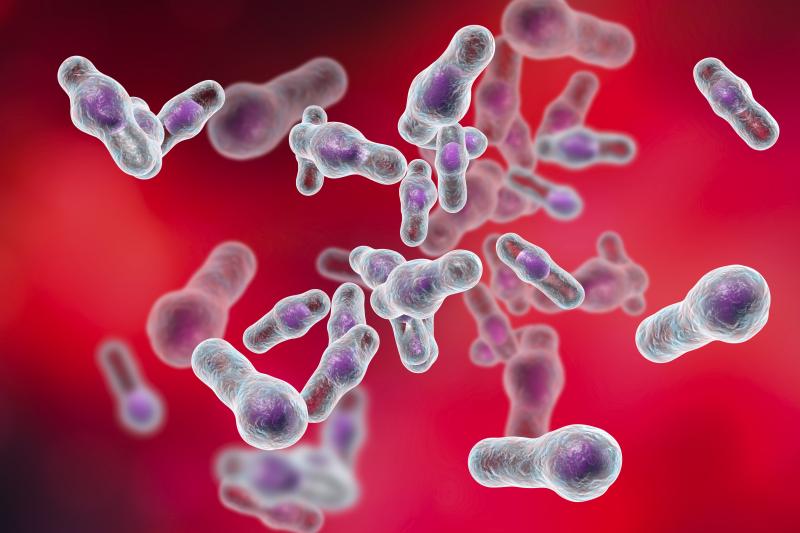Faecal calprotectin levels shed light on Crohn’s disease course





For patients with Crohn’s disease, normalization of faecal calprotectin (FC) levels within 12 months of diagnosis indicates a better outlook, with the risk of disease progression low, a study has found.
The findings provide evidence of the benefits of an early FC-based treat-to-target strategy and suggest that resolution of mucosal inflammation, as measured with FC, within the first 12 months of diagnosis has a significant impact on disease course, according to researchers.
A cytoplasmic protein released by white blood cells, FC levels in the stool are tightly correlated with the presence and degree of mucosal inflammation in CD. So, incorporating the biomarkers into a treatment-decision algorithm for CD may improve 12-month mucosal healing and outperforms a strategy that relies on symptoms alone, the researchers pointed out. [Inflamm Bowel Dis 2012;18:2218-2224; Eur J Gastroenterol Hepatol 2016;28:1137-1144; J Crohns Colitis 2019;13:442-450; Lancet 2019;390:2779-2789]
In the study, they examined whether normalization of FC within the first 12 months of diagnosis influenced disease progression in an extensively phenotyped cohort of 375 CD patients (median age at diagnosis, 27.4 years), all of whom had FC levels ≥250 μg/g at diagnosis. More than 90 percent of these patients (91.2 percent) had an inflammatory (B1) phenotype at diagnosis, and more than half had moderate–severe clinical (55.2 percent) and endoscopic (56.0 percent) disease activity. The median follow-up from diagnosis was 5.3 years.
Median FC at diagnosis was 820.0 µg/g, and the levels dropped to the normal range (<250 µg/g) within 12 months in 43.5 percent of the population. Cumulative rates of composite disease progression (progression in Montreal behaviour/new perianal disease, hospitalization, or surgery) were 16.3 percent at 2 years, 38.8 percent at 5 years, and 48.4 percent at 7 years after diagnosis.
FC normalization within a year was significantly associated with a 66-percent lower risk of composite disease progression (hazard ratio [HR], 0.36, 95 percent confidence interval [CI], 0.24–0.53; p<0.001). The survival advantage remained even when progression endpoints were examined separately: HR for progression in Montreal behaviour or new perianal disease was 0.22 (95 percent CI, 0.11–0.45; p<0.001), HR for hospitalization 0.33 (95 percent CI, 0.21–0.53; p<0.001), and HR for surgery 0.39 (95 percent CI, 0.19–0.78; p=0.008). [Clin Gastroenterol Hepatol 2020;doi:10.1016/j.cgh.2020.08.022]
Kaplan Meier curves for the two FC cut-off groups, <50 µg/g and 50 to <250 µg/g, were similar. This suggests that there may be no additive benefit for more stringent treatment targets in the first year, as the researchers pointed out.
There were two factors that influenced the achievement of FC normalization within 12 months: L4 disease, which was associated with lower odds (odds ratio [OR], 0.29, 95 percent CI, 0.15–0.53; p<0.001), and initiation of biologic therapy (with or without an immunomodulator) within 3 months of diagnosis, which increased the likelihood (OR, 3.91, 95 percent CI, 1.45–10.55; p=0.007).
Perhaps the major limitation of the study was that many incident CD cases were not included in the analysis, because of the lack of accurate date of diagnosis and FC measurement at baseline or follow-up, the researchers acknowledged.
“This was partly because we adopted strict inclusion criteria, where patients would only be included if their FC was submitted [about] 60 days of the date of diagnosis and prior to any treatment starting,” they explained. “As such, it is possible that there was a selection bias introduced and our study population may not be truly representative of our entire CD population.”
Nevertheless, based on the overall results, “we believe that a prospective treat-to-target study in the first year of CD is now urgently required,” they concluded.